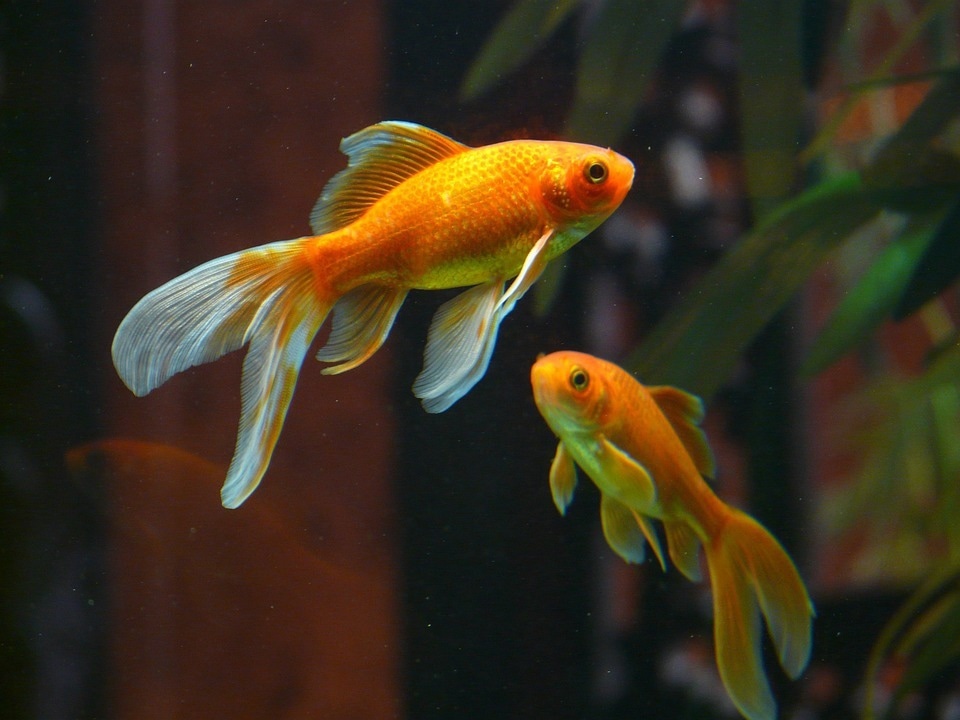Reviewed by Danielle Ellis, B.Sc.Jun 14 2023
For those who have maintained a garden, hybrids are well-known, from disease-resistant tomatoes to Stargazer lilies.
 Goldfish, seen here, share a common hybrid ancestor with carp, according to recent research. Image Credit: Pixabay
Goldfish, seen here, share a common hybrid ancestor with carp, according to recent research. Image Credit: Pixabay
Hybrids, which are widespread in both agriculture and wildlife, include chromosomes from two or more parent species. The situation known as allopolyploidy occurs when these different parental chromosomes double in some species, including strawberries, goldfish, and several others.
Adam Session, an assistant professor of biological sciences at Binghamton University, and Daniel S. Rokhsar, a professor of genetics, evolution, and development at the University of California, Berkeley, describe a method to link these genomes to the parent species of the polypoid hybrid in “Transposon signatures of allopolyploid subgenome evolution,” a recent article published in the journal Nature Communications.
The scientists’ approach enables them to identify distinct ancestries by examining genomic patterns in the hybrid itself, in contrast to earlier approaches that used comparison with similar non-hybrid species to ascertain polypoid ancestry.
Each ancestral genome carries a unique set of repetitive elements. So if we find sets of chromosomes in a polypoid that carry different repetitive elements, that proves hybrid ancestry and allows us to figure out which chromosomes were inherited together coming from the various progenitor species.”
Adam Session, Assistant Professor, Biological Sciences, Binghamton University
In the article, they apply the technique to a few well-researched polyploid hybrid species, including tobacco, cotton, and cyprinid fish, including carp and goldfish. They also employ it to elicit information on the disputed origins of other hybrid plants, such as false flax and strawberries.
Session added, “In many cases, the ancestors of living polyploids are not known. Using our method, we can figure out the ancestral origin of different chromosomes just by studying the polyploid genome itself, and divide the chromosomes into sets, or ‘sub-genomes,’ derived from its various ancestors. In addition to identifying the subgenomes, we can also tell you the order in which they were put together.”
Plants experience polyploidization much more frequently than animals do because plants can withstand having many copies of their genomes, according to Session. Polyploidization is the duplication of genomes in a hybrid that stabilizes its ancestry.
Even if it does occur in some fish and amphibians, the polyploidization process is more complicated when it comes to animal species. The scientists establish for the first time that goldfish and common carp share duplicated gene sequences, and as a result, a common hybrid ancestor.
Mammals are not polyploid, yet hybridization is still a possibility. Consider mules, which are a cross between horses and donkeys: Although female mules can mate with either of their parent species, male mules are functionally sterile. However, the specific hybrid type cannot be reliably reproduced without genetic duplication.
A hexaploid, like false flax, has six chromosomes obtained from three parent species, whereas a tetraploid, like cotton, has four copies of each chromosome, two from each of its two parents. An octoploid species like the strawberry, which has eight copies of each chromosome, ultimately descends from four ancestral species.
Understanding the sub-genome structure of polyploid genomes is a step toward understanding the complex biology of these organisms. The genes supplied by each of the ancestral species change in their new polyploid environment over the course of millions of years.
Others could develop unique functions or connections with their counterparts in the other sub-genomes, while some redundant genes are lost or inactivated.
The new research makes the case that these evolutionary processes can be significantly impacted by the sequence in which the parental species are incorporated into the emerging polyploid mixture in a higher polyploid species like strawberry.
According to the authors, determining how these duplicates will affect the polyploid as it evolves will be a continuing problem.
“Understanding polyploid genome evolution as a whole is important to the wider field of plant biology. Many important crops like maize and emerging biofuel crops like miscanthus and switchgrass are affected by this process, and we hope to take advantage of their genomic flexibility to breed new and improved varieties,” Session concluded.
Source:
Journal reference:
Session, A. M., et al. (2023). Transposon signatures of allopolyploid subgenome evolution. Nature Communications. doi.org/10.1038/s41467-023-38560-z